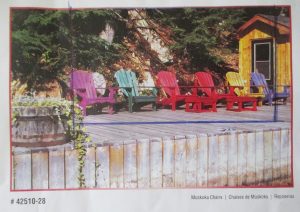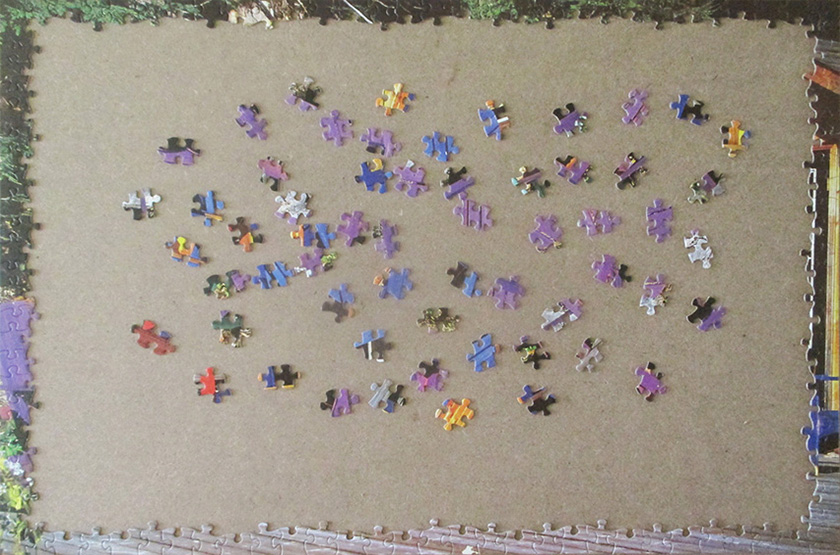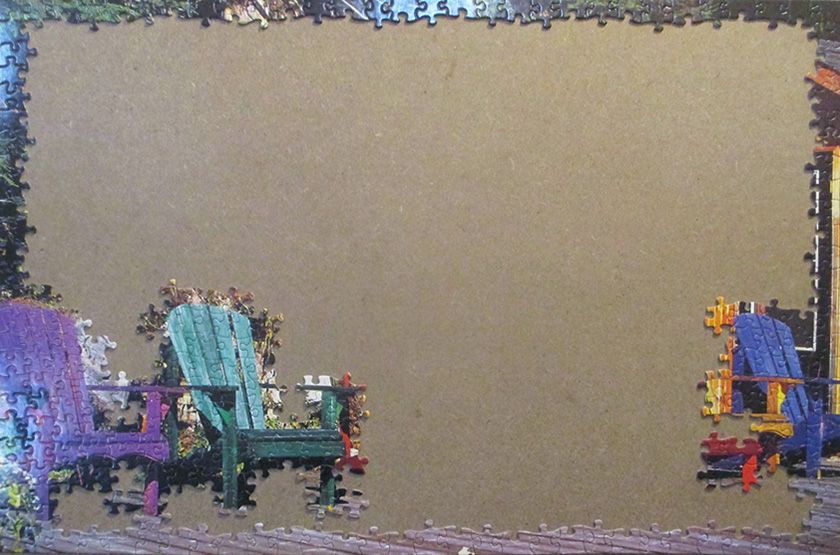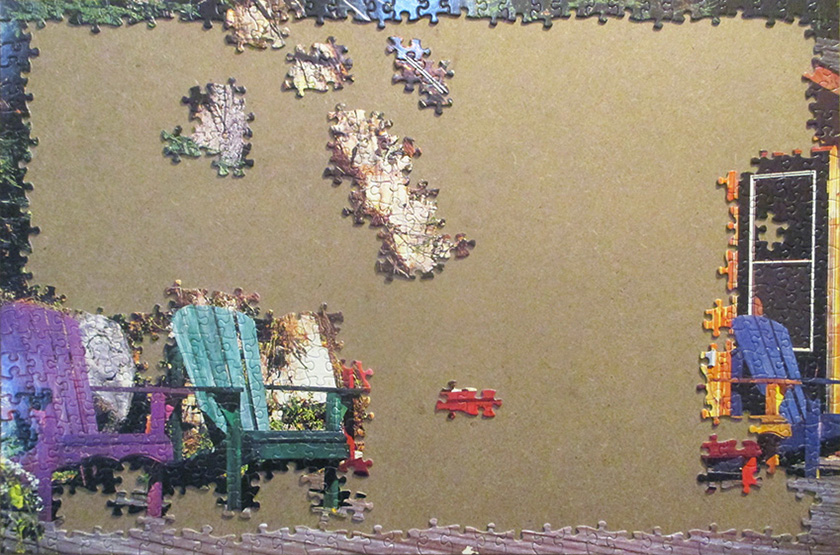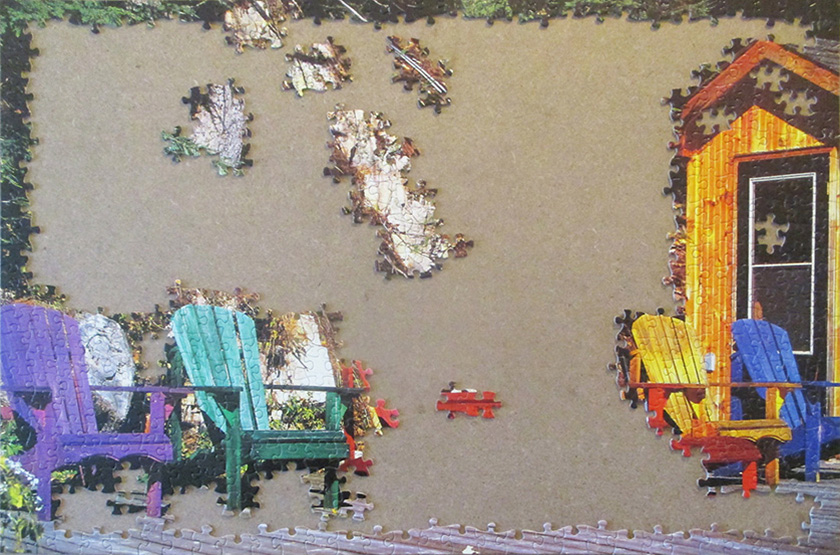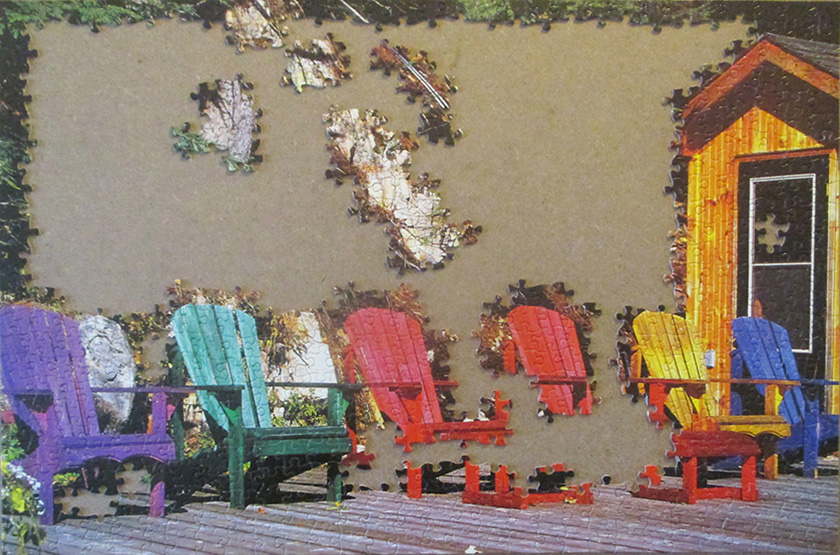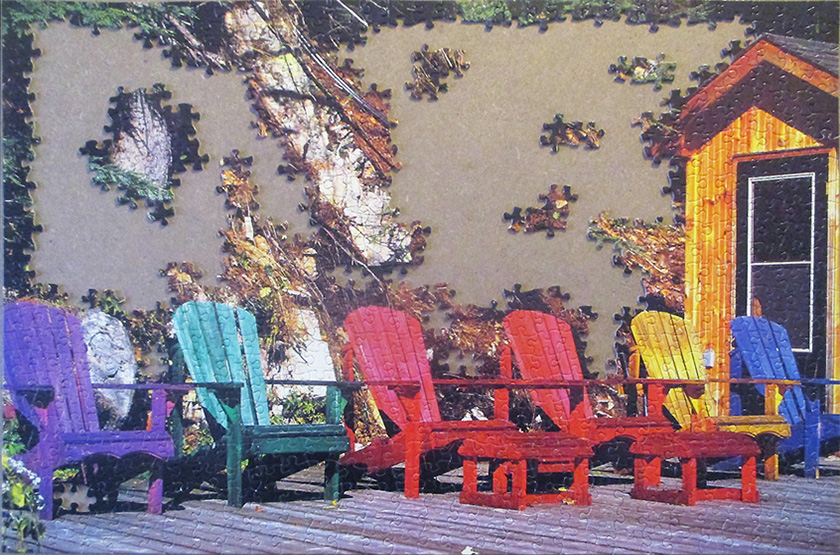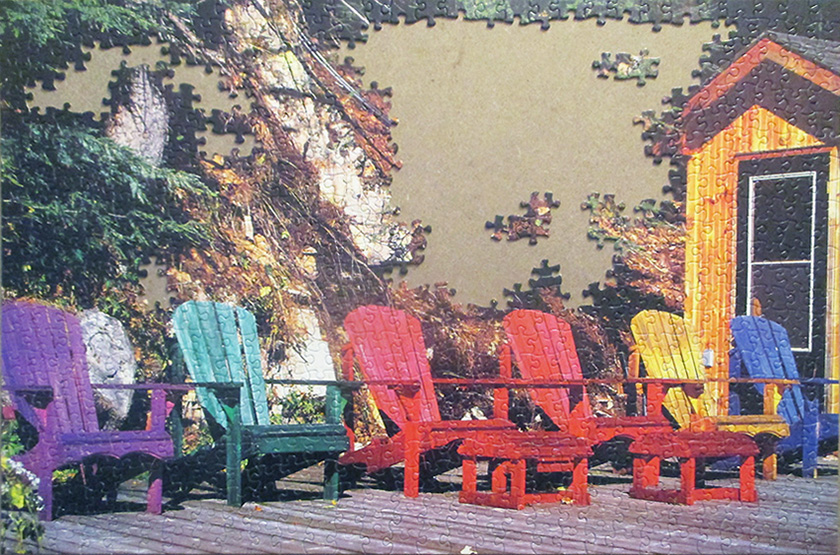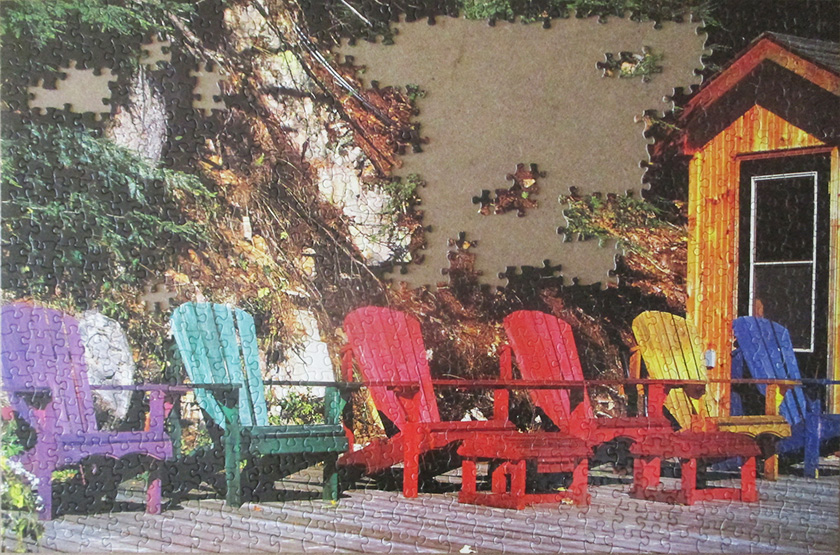 The last one! from that second box of ten. Again I expected boredom or frustration- yet it was okay as far as puzzles go. Not surprised after the last two, that this one also had issues. The image was all there, no pain to my fingers, but the pieces had a very loose fit, so easily got knocked out of place, unable to move sections around, and so many false fits! This was particularly maddening when I did the section of water, I took out and redid so many pieces to figure them all out. The second half of it was hard, too- after getting in the blurry indistinct fill of the blown-up statue in the background, the rest of it all that pale blue blending so subtly into the white clouds, hard to make any distinctions at all. (My husband tried to sneakily put in just one piece of sky to see if I’d notice- but he was unable to do it!) I was pretty much fitting them all by shape at that point- but there’s no shape variety! All two knobs, two holes (like the rest of the puzzles in this box) with just enough variation of the knob sizes, ‘arm’ angles and such that it was doable. By the time I got to the blue/white background, I was familiar enough with the piece cut to be able to sort, but there were still a lot of false fits to shuffle around.
The last one! from that second box of ten. Again I expected boredom or frustration- yet it was okay as far as puzzles go. Not surprised after the last two, that this one also had issues. The image was all there, no pain to my fingers, but the pieces had a very loose fit, so easily got knocked out of place, unable to move sections around, and so many false fits! This was particularly maddening when I did the section of water, I took out and redid so many pieces to figure them all out. The second half of it was hard, too- after getting in the blurry indistinct fill of the blown-up statue in the background, the rest of it all that pale blue blending so subtly into the white clouds, hard to make any distinctions at all. (My husband tried to sneakily put in just one piece of sky to see if I’d notice- but he was unable to do it!) I was pretty much fitting them all by shape at that point- but there’s no shape variety! All two knobs, two holes (like the rest of the puzzles in this box) with just enough variation of the knob sizes, ‘arm’ angles and such that it was doable. By the time I got to the blue/white background, I was familiar enough with the piece cut to be able to sort, but there were still a lot of false fits to shuffle around.
Just like last time, I got a little kick out of laying all the puzzles out on my extended table. Except I didn’t have enough white panels and puzzle boards, so I tried sliding a sheet of white cardboard under but it was warped and the New York puzzle started falling apart. Oh well. I was ready to crumple that one down to individual pieces anyway.

Funny thing about this puzzle set. Recently I saw someone on another puzzle group I’m in online, offering a different ten-in-a-box set by the same company. Her box had some of the same puzzles as mine- the castle and the balloons I’m pretty sure were exact duplicates. But hers had a different pair of kittens, and a tiger instead of a leopard, and other different ones. I was tempted to pick up her set just for the tiger puzzle, but have changed my mind since.
I found from looking around online, they do this a lot. Here’s four other boxed multi packs (as they’re called on the puzzle cataloging site I use). First one has the same balloon and New York puzzles, but a tiger and different set of kittens for the animal interest. Second one I found has the same balloons again and the castle, but wolves and other different scenes. Third set has the same kittens I did, but different balloons (and some cute border collie puppies). The last one I found has the same balloons and castle again, but everything else different (with a chipmunk!). I just don’t get why they recycle so many images into different boxed sets- can’t they come up with more pictures? Also, I found plenty of sets that just had scenery, or castles, or city skylines, but none that just had the animals. I would happily pick up a box that had the tiger, wolves, collie puppies and chipmunk puzzles together! but don’t want a bunch more balloons and scenic views (when the quality is rather poor to start with).

Anyway, here’s the assembly of Statue of Liberty puzzle (as I called it in my head). It felt a bit disconcerting to be putting together a picture with the Twin Towers standing.box
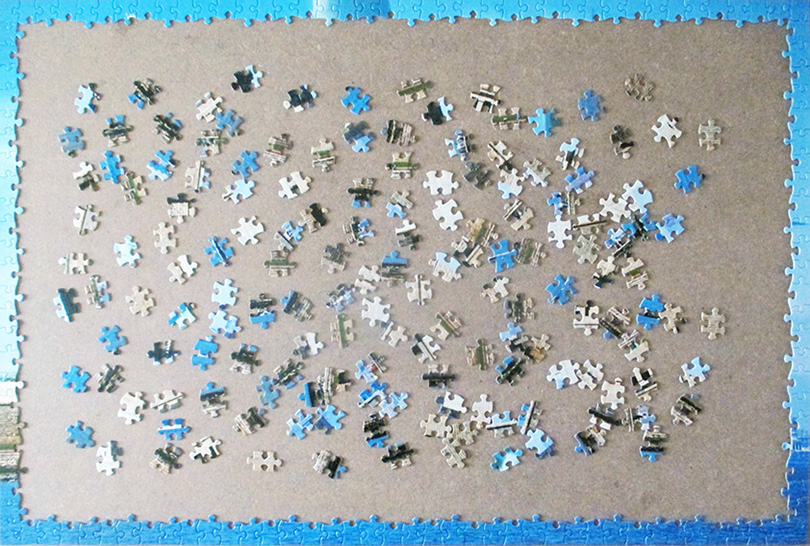
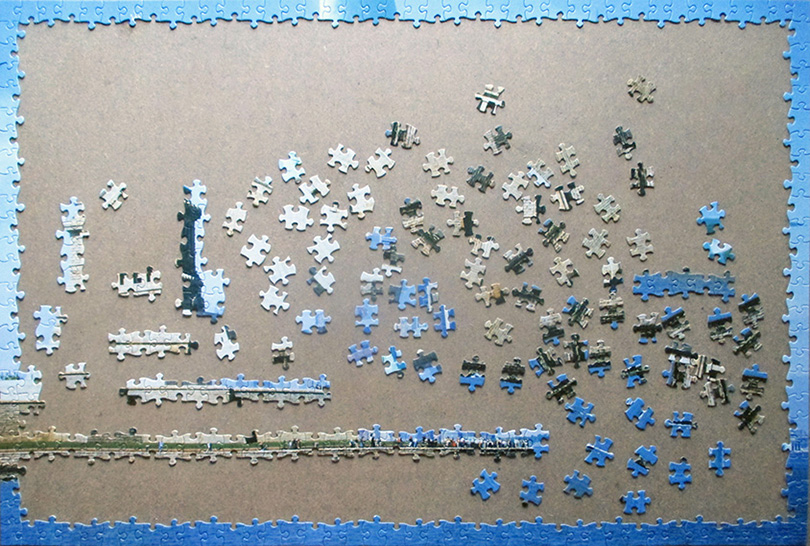
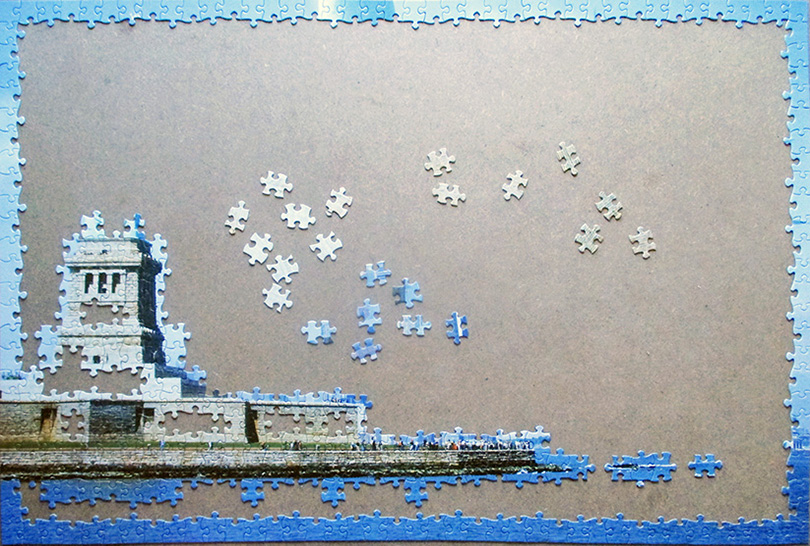

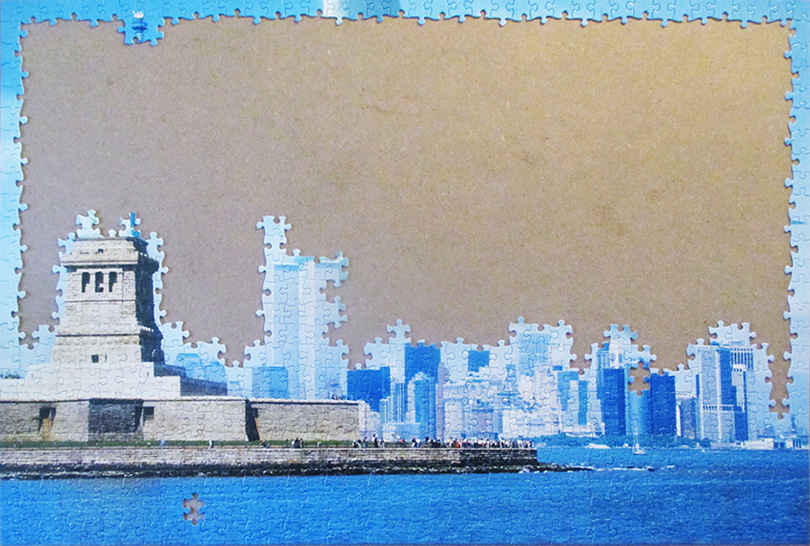
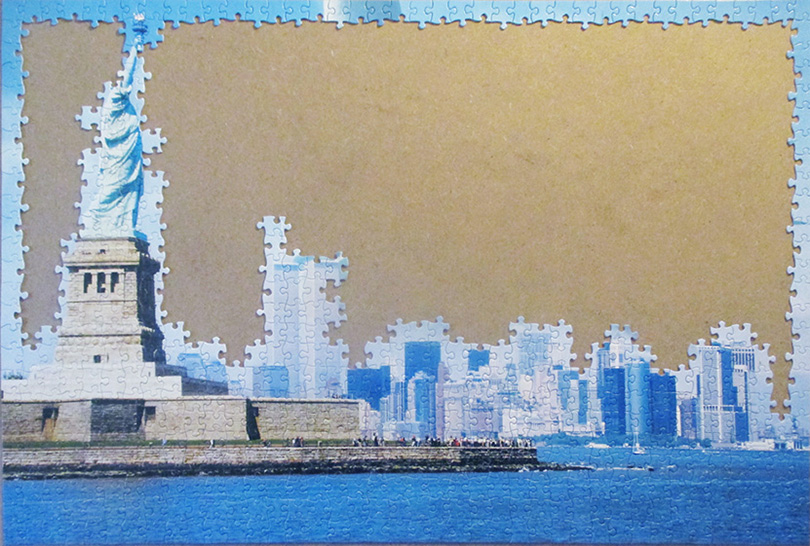
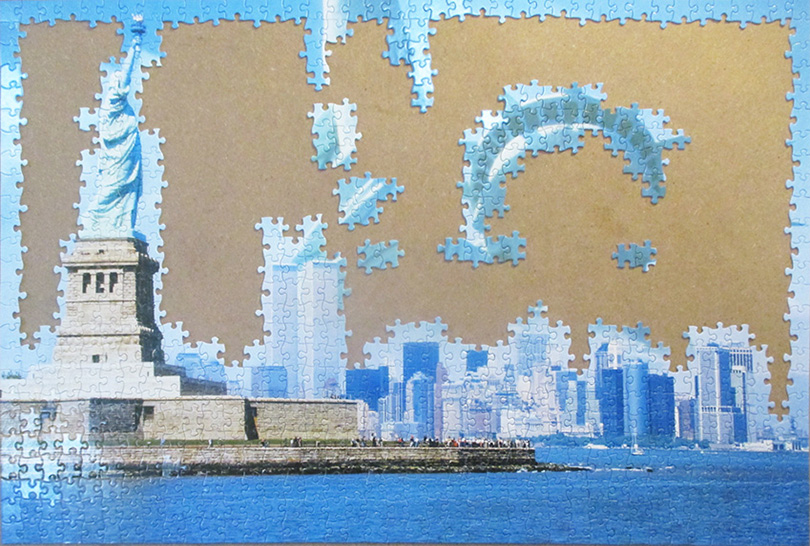
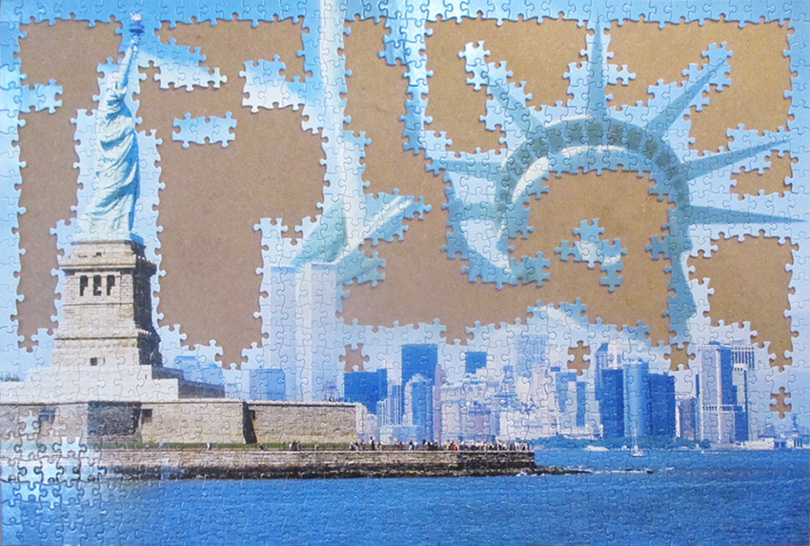
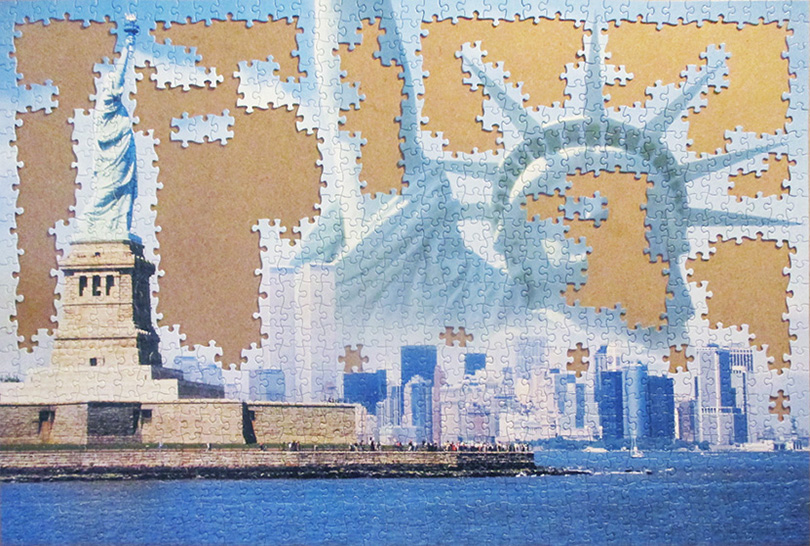
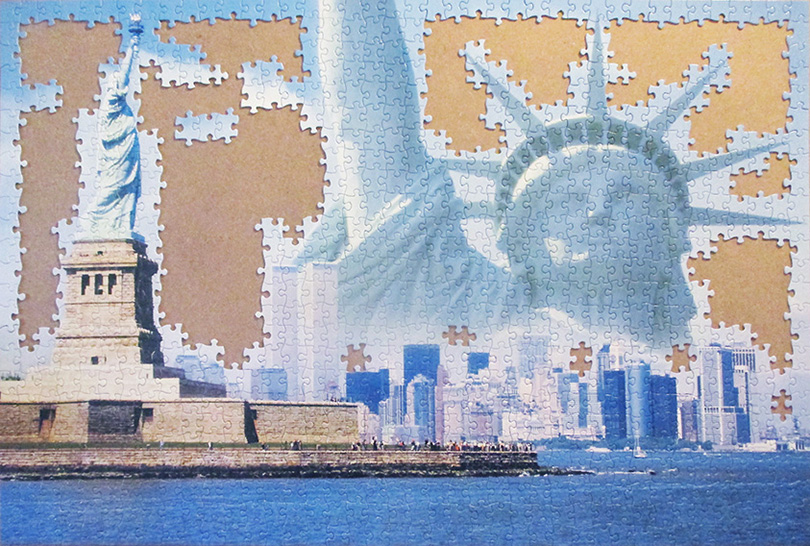
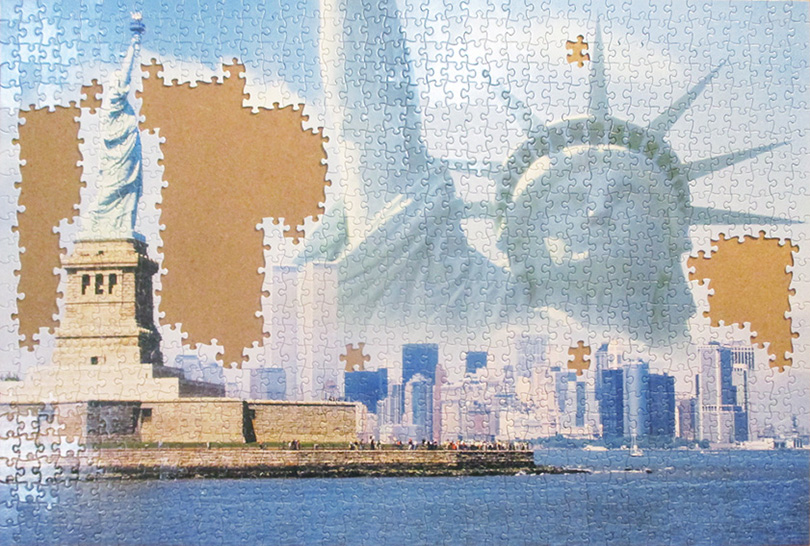

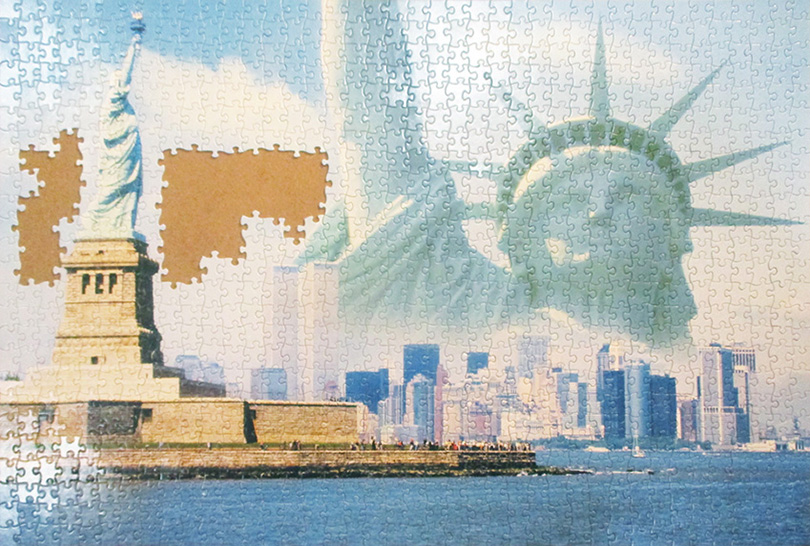


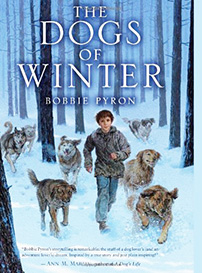
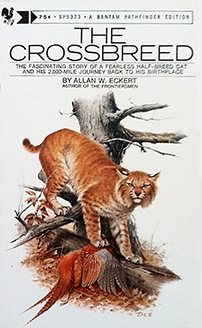

 The Faces in the Mountain! That’s what my kid called this national monument when we visited it once- many years ago. I thought I would find this puzzle tedious, but like the
The Faces in the Mountain! That’s what my kid called this national monument when we visited it once- many years ago. I thought I would find this puzzle tedious, but like the 
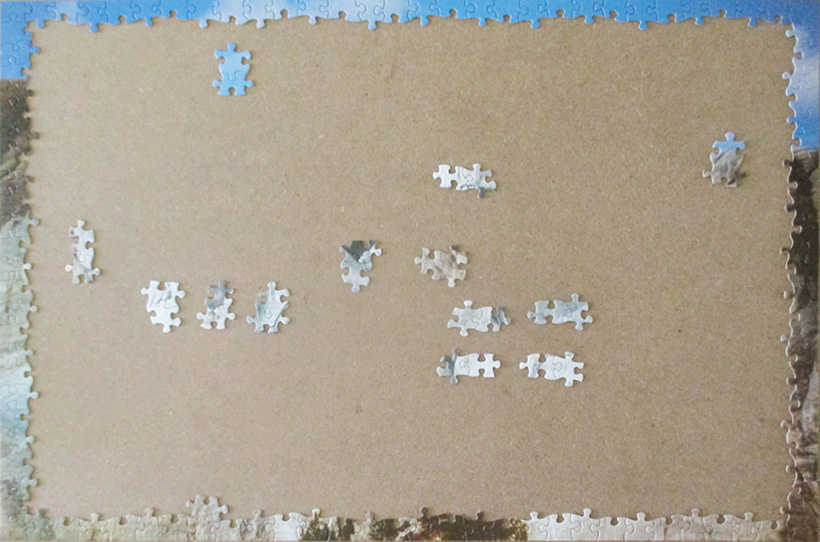
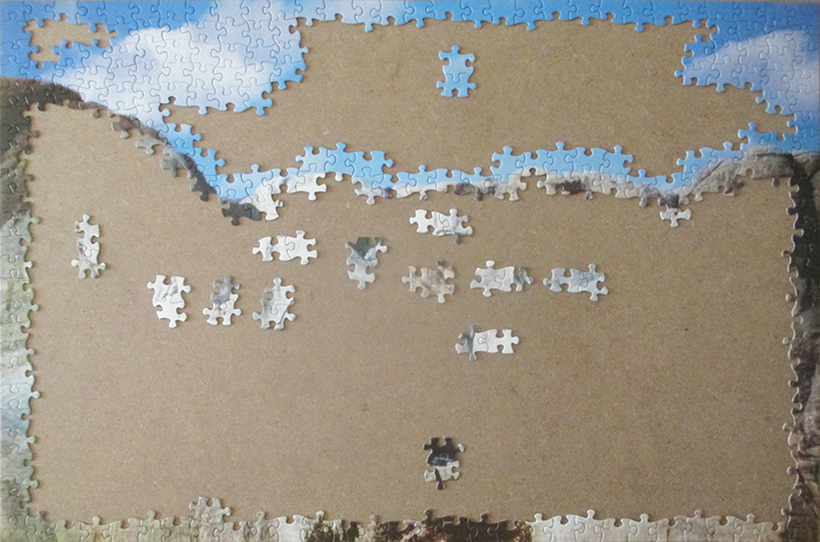
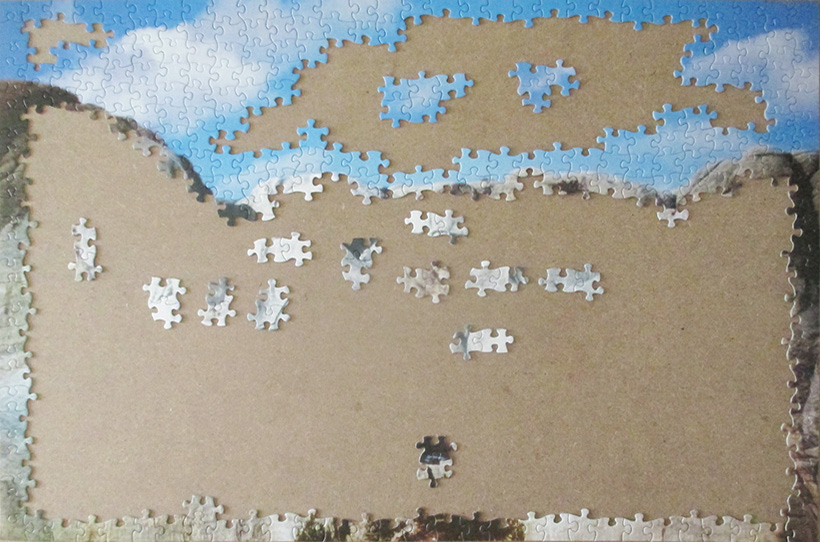
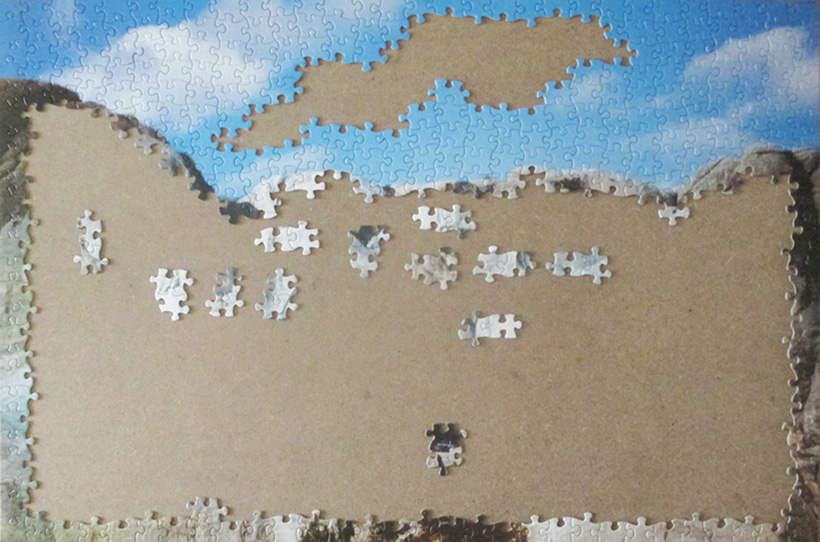

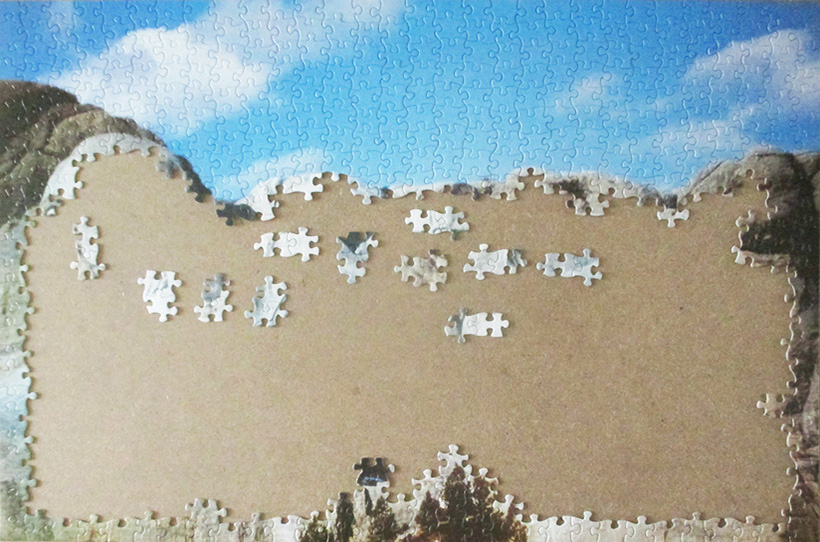
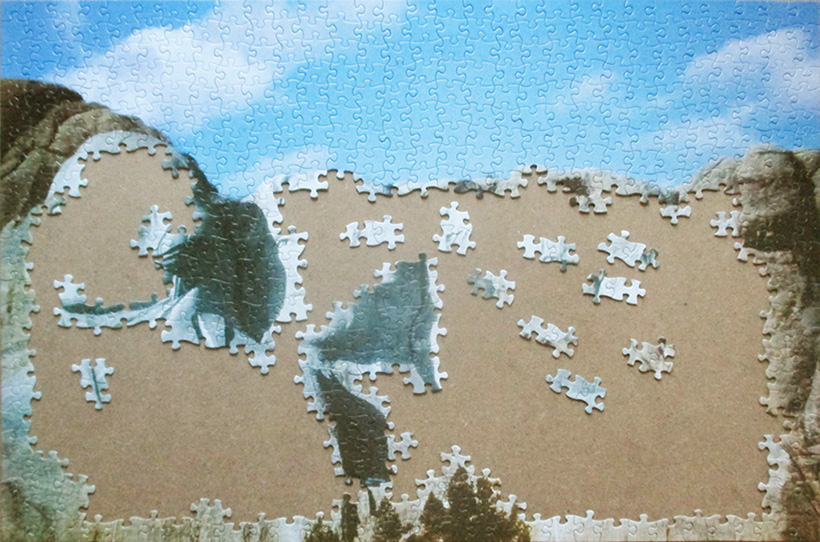
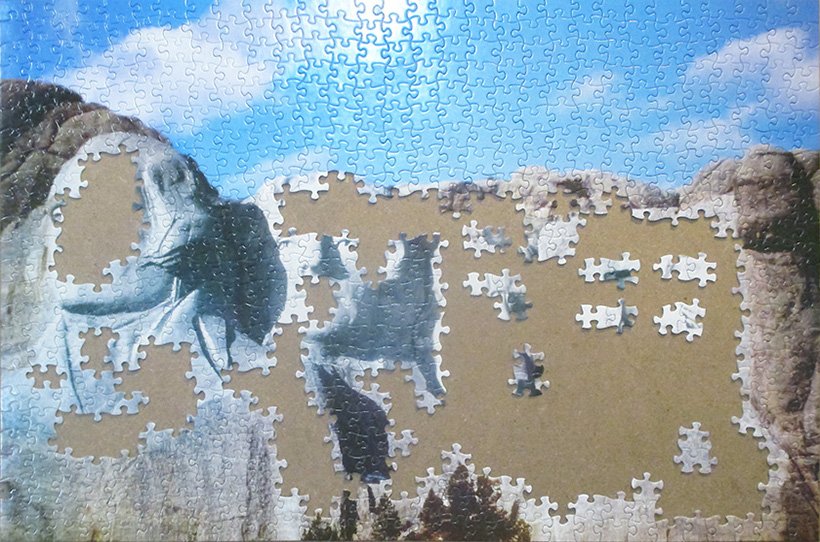

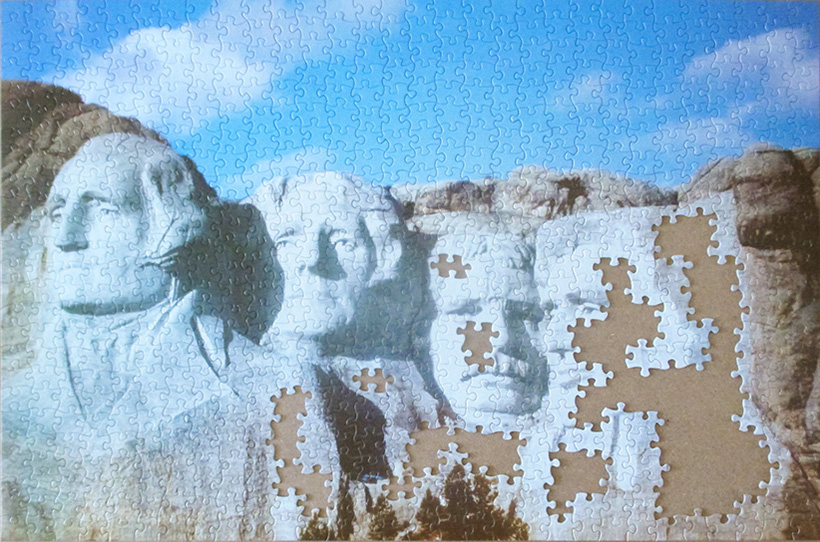




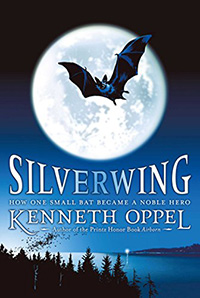
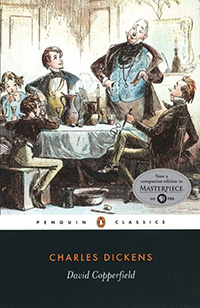
 I thought this one would be easy, with the bright solid colors. But there was some confusion making the edges first, which cleared up when I realized that a full half of the image was cropped out- the puzzle itself being a lot smaller than the image shown on the picture insert! Just like with the
I thought this one would be easy, with the bright solid colors. But there was some confusion making the edges first, which cleared up when I realized that a full half of the image was cropped out- the puzzle itself being a lot smaller than the image shown on the picture insert! Just like with the 